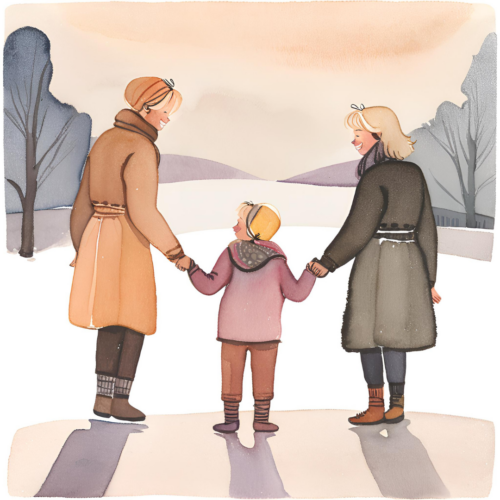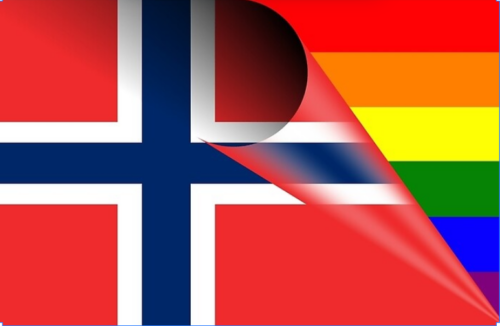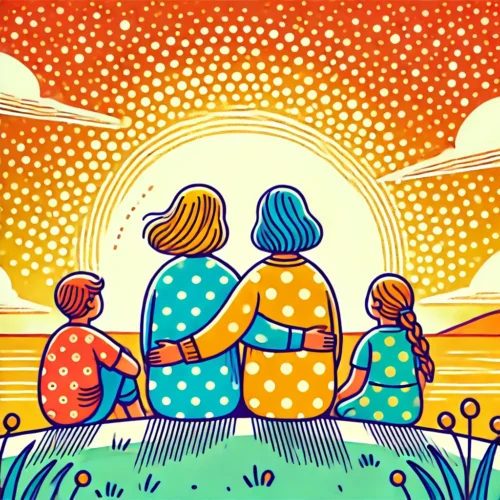This newly launched series was inspired by the article series Is the Grass Always Greener on the Other Side? That long-running series brought us perspectives from lesbians all around the world. Now, we want to take a closer look at lesbian families. If you missed the first – intro – article in this series, you can check it here.
We’ve written a few articles about Norway already, but we hope you aren’t bored yet! It takes a long time to get to know a culture and really get a sense of how the local people think about different issues. For what we have gotten to know about Norway, we find many aspects of it inspiring and worthy of sharing worldwide.
Moving to Norway, we were surprised by how many rainbow families we saw in Trondheim. Growing up in the Midwest of the United States, Amy doesn’t remember seeing any rainbow families – same for Anna in Hungary. Actually, in Budapest the ones we saw were exclusively at LGBTQ+ community events. So we were curious if our impression matched what the locals thought. For this article, we interviewed three non-LBTQ+ women to learn about the general public’s perception of rainbow families in Norway.

What is a rainbow family?
“Many different combinations outside the ‘normal’. Two moms, two dads, two trans parents.”
How common are rainbow families in Norway?
“They are more common and visible in the cities and not so visible in the small towns. There is a little stigma of being queer in the small towns.”
“More and more common. We see them more and more often in the cityscapes.”
“Not so common, but they are becoming more and more. It is becoming more accepted.”
How can members of the LGBTQ+ community have children in Norway?
“IVF (if you don’t have access to sperm), surrogacy abroad, and adoption.”
“Adoption, surrogacy, sperm donors, and going to Denmark.”
“Donors and IVF. Surrogacy isn’t legal in Norway.”
Based on our conversations with the three women, it seems that rainbow families are growing in Norway and becoming more visible and accepted (at least in the cities). But what is the legal situation that made this possible?

Let’s take a walk down history lane.
In 1972, the law changed so that it was no longer forbidden to be homosexual. Later on, in 1993, the Partnership Act was passed which gave lesbian and gay couples the same rights and duties as heterosexual couples had through marriage (except the right to adopt and the chance to enter into a partnership in the church). Finally, in 2008, the government passed the Marriage Act which gave lesbian and gay couples the right to marry. It also gave the right to adopt and the right to assisted reproduction for lesbian couples.
So today in Norway LGBT couples having several options for starting a family:
- Become foster parents
- Assisted reproduction—only for women and you can’t choose the sperm donor
- Adoption—if you adopt from abroad, only Columbia allow same-sex couples to adopt
- Surrogacy—not legal in Norway, but if you do it abroad it is possible to bring the child back to Norway since children have the right to have parents
- Home insemination—you can choose the sperm donor, but children can have a maximum of two legal parents. So if the sperm donor is known, they get parental rights
- Step-child adoption—only a right for cohabitants or married couples
- Co-mothering—you must be married or cohabitants with the woman giving birth to the child and consent to assisted reproduction has to be given beforehand

In our next article, we’ll talk with a lesbian couple about how they started a rainbow family in Norway.
For more information, check out these links (some are in Norwegian, but you could use a translator):

